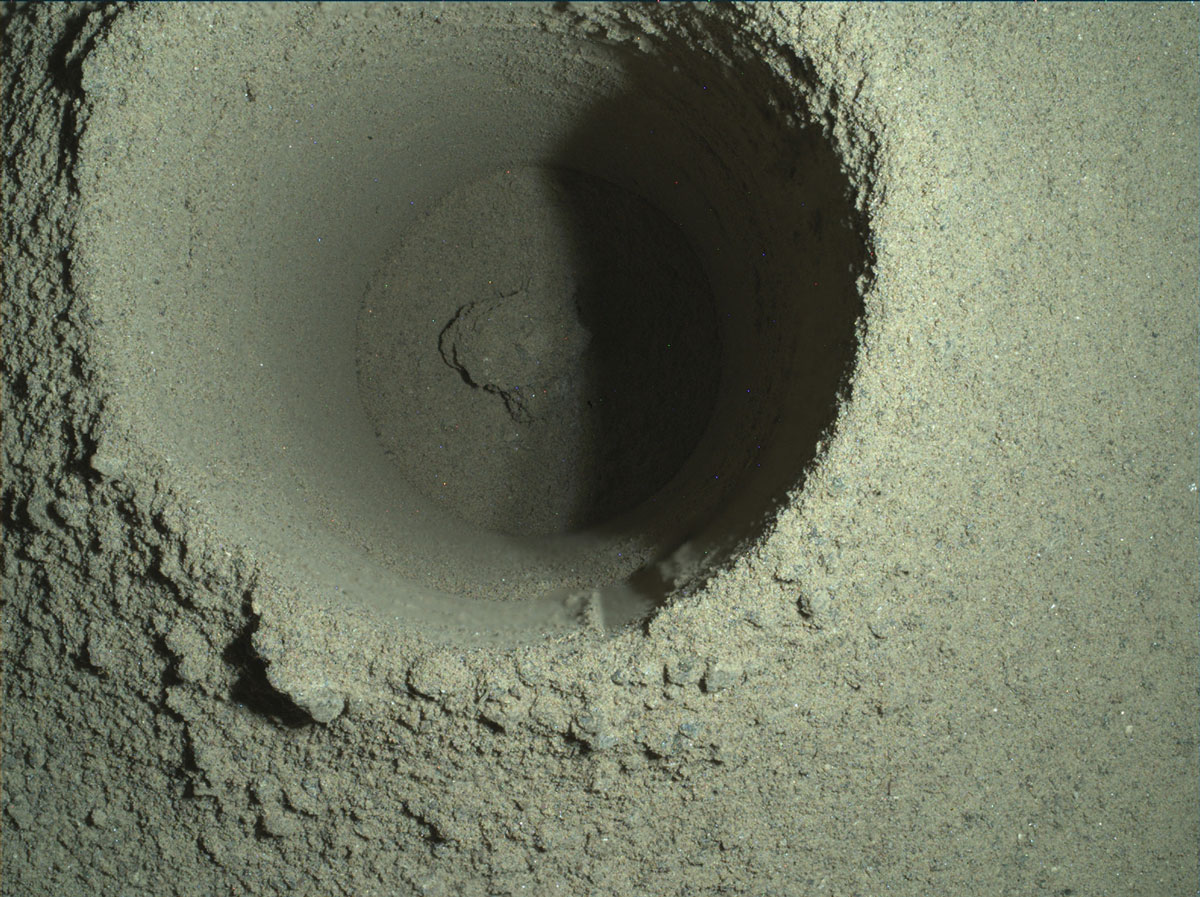Perseverance Mars rover fumbled 1st sampling attempt because of 'unique' powdery rock, NASA finds
NASA's Perseverance rover's first sample collection didn't go as planned due to trouble with a "unique" and unexpectedly powdery Mars rock.
Perseverance landed on the Red Planet on Feb. 18 to search for signs of ancient Mars life and collect and store samples for future study back on Earth. However, when the rover made its first attempt to take a sample of Martian dirt on Aug. 6, things didn't go exactly as planned in a series of events that Louise Jandura, NASA Jet Propulsion Laboratory's chief engineer for sampling and caching, described as a "rollercoaster of emotions" in a NASA statement.
Initial signs suggested that the rover had successfully collected and stored a chunk of Martian material in one of its 43 sample tubes. But the morning after the collection, the volume measurement and post-measurement images came in and mission team members back on Earth determined that the sample tube was actually empty. After two days of investigating what happened, the team declared that this particular Martian rock was too powdery to be successfully collected.
The science and engineering teams working on the mission found that, they think, the "uniqueness of this rock" at this sampling site is the "dominant contributor to the difficulty in extracting a core from it," Jandura said in the statement. "The hardware performed as commanded, but the rock did not cooperate this time."
Related: Where to find the latest Mars photos from NASA's Perseverance rover
"It took a few minutes for this reality to sink in but the team quickly transitioned to investigation mode. It is what we do. It is the basis of science and engineering," Jandura said about the moments after team members realized that what they thought was Perseverance's first successful Mars sample capture wasn't so successful after all.
To expand a bit on what exactly happened, the team came to three different conclusions after investigating the sampling event.
Breaking space news, the latest updates on rocket launches, skywatching events and more!
They found that there was no unusual response from the "Corer," the drill that collects Martian rock samples; in images of the sampling site, they found no intact sample core or pieces on the surface; and, perhaps most notably, they found that the "unusual rock" they tried to sample ended up being just "powder/small fragments which were not retained due to their size and the lack of any significant chunk of a core," according to the statement.
"It appears that the rock was not robust enough to produce a core," Jandura added in the statement. "Some material is visible in the bottom of the hole. The material from the desired core is likely either in the bottom of the hole, in the cuttings pile, or some combination of both. We are unable to distinguish further given the measurement uncertainties."
Despite the difficulties of this first attempt, Jandura said that the team's outlook remains positive.
"It reminds me yet again of the nature of exploration," Jandura said. "A specific result is never guaranteed no matter how much you prepare. Despite this result, science and engineering have progressed. We achieved the first complete autonomous sequence of our sampling system on Mars within the time constraints of a single Sol [one Martian day, about 40 minutes longer than one Earth day]. This bodes well for the pace of our remaining science campaign."
Because of the difficulties of this sampling attempt, the team will have Perseverance travel to a new location before attempting to grab another piece of Martian rock. Mission teams will have Percy roll to its next sampling site, which is located in a region known as South Seitah, which is the farthest point from where the rover landed that the team has planned for it to collect samples.
The current goal is to attempt this sample collection in early September, according to the statement.
Email Chelsea Gohd at cgohd@space.com or follow her on Twitter @chelsea_gohd. Follow us on Twitter @Spacedotcom and on Facebook.

Chelsea “Foxanne” Gohd joined Space.com in 2018 and is now a Senior Writer, writing about everything from climate change to planetary science and human spaceflight in both articles and on-camera in videos. With a degree in Public Health and biological sciences, Chelsea has written and worked for institutions including the American Museum of Natural History, Scientific American, Discover Magazine Blog, Astronomy Magazine and Live Science. When not writing, editing or filming something space-y, Chelsea "Foxanne" Gohd is writing music and performing as Foxanne, even launching a song to space in 2021 with Inspiration4. You can follow her on Twitter @chelsea_gohd and @foxannemusic.


